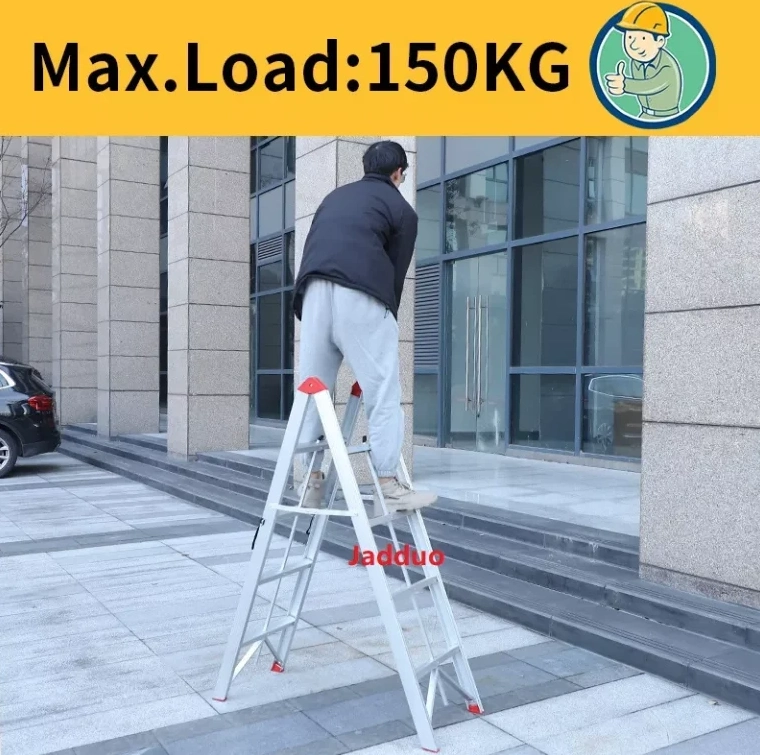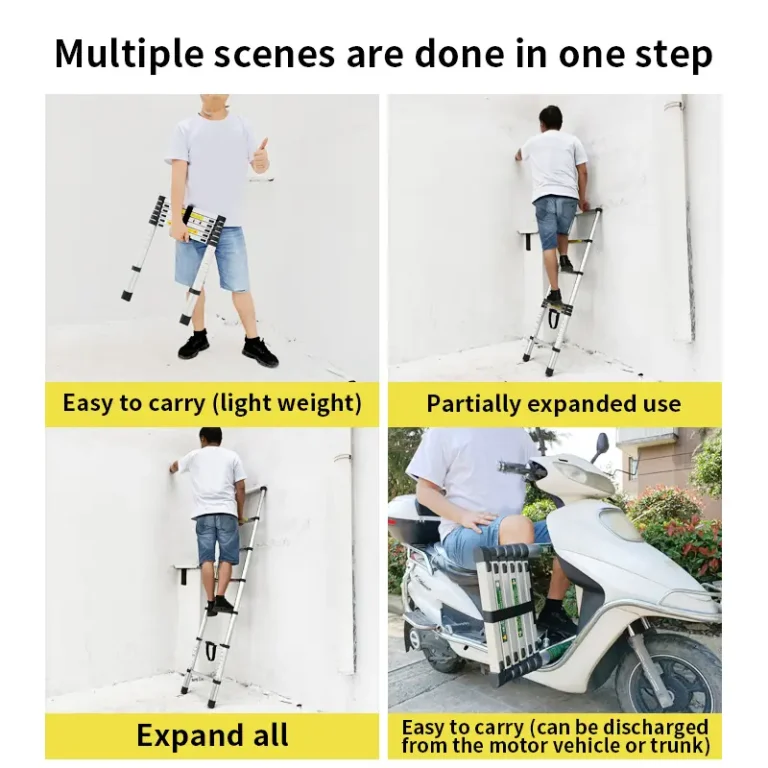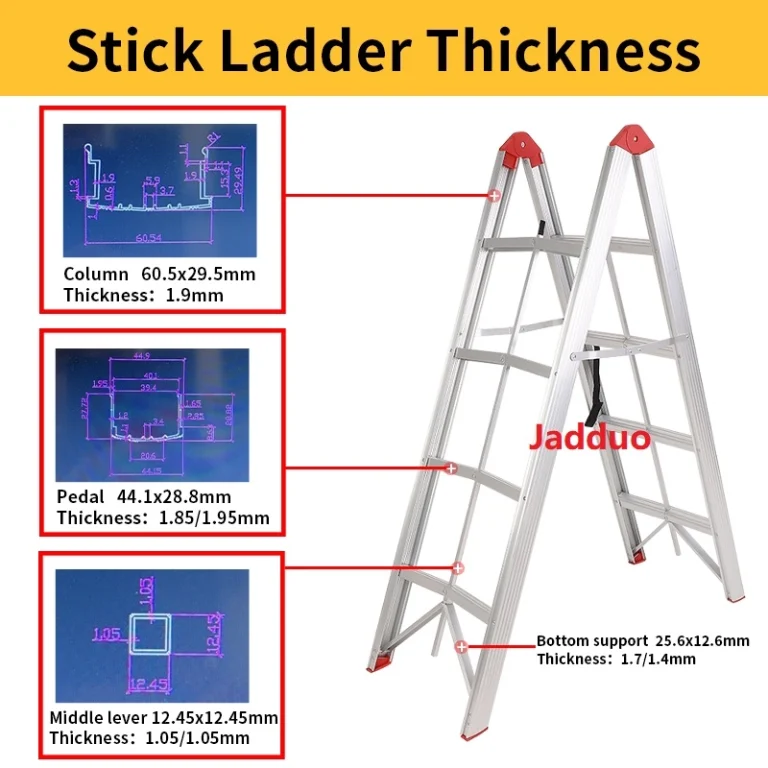Telescopic ladders are awesome because they’re easy to store and strong enough for tough jobs. But staying safe means checking them carefully and using them right. Smart design, auto-locking systems, and proper weight limits keep you secure when climbing. Whether you’re fixing something at home or working on a job site, this guide shows you the key safety checks to make sure your telescopic ladder is reliable. JADDUO’s telescopic ladders are built with safety in mind for all kinds of tasks!
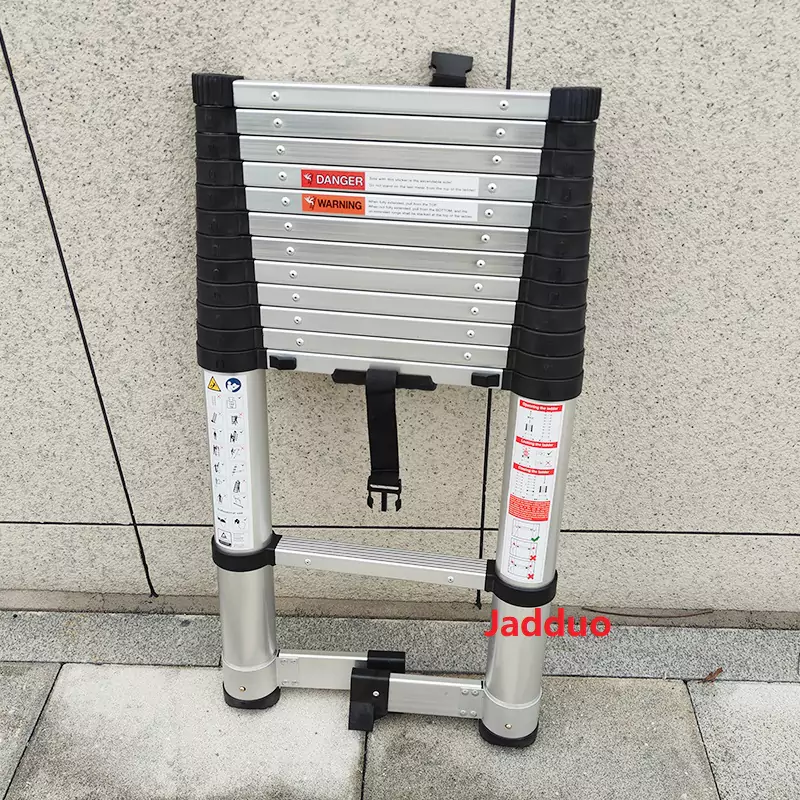
What Makes the Design of Telescopic Ladders So Important?
Which Parts Are Key to Safety and Performance?
A telescopic ladder is made of aluminum tubes that slide into each other. These tubes are carefully built to extend and collapse smoothly. The main parts include steps (called rungs), joints for extending, locking systems, and non-slip feet. Modern JADDUO telescopic ladders use strong aluminum profiles. They’re light, have grippy feet, and include safety features to keep you steady.
The way the tubes overlap spreads weight evenly across the ladder. This design stops any one part from taking too much stress. It helps prevent bending or breaking when you climb.
How Does Careful Design Improve Balance and Weight?
Good engineering makes sure each tube lines up perfectly when the ladder extends. Wide steps with rough surfaces spread your weight better. They also make your feet stick to the ladder, keeping you safer.
If you want a telescopic ladder that’s both safe and smartly designed, JADDUO’s range works great for home projects and industrial jobs.
Should You Check Your Telescopic Ladder Before Every Use?
What Damage Should You Look For?
Always inspect your telescopic ladder before climbing. Look for cracks, dents, missing end caps, or bent tubes. Even small damage can make the ladder unsafe. Check for broken steps, bent parts, or worn-out feet. Any of these can cause the ladder to fail when you’re on it.
Why Are Locks and Joints So Important?
The locking pins or buttons must click into place at each step level. Test every joint by extending the ladder. Listen for a clear “click” sound. If a section moves or collapses when you push lightly, don’t use it. The locks keep the ladder steady, so they must work perfectly.
How Do Cleanliness and Oil Affect the Ladder?
Dirt, dust, or grease can clog the sliding tracks. This makes the ladder hard to extend or collapse. Wipe down the rails before every use. Clean off oil, mud, or ice from the steps and feet. Add a little oil to the joints now and then to keep them moving smoothly without sticking.
How Does Auto-Locking Tech Stop Accidents?
Some JADDUO telescopic ladders have auto-locking systems. Identify whether your ladder is locked based on the image below.
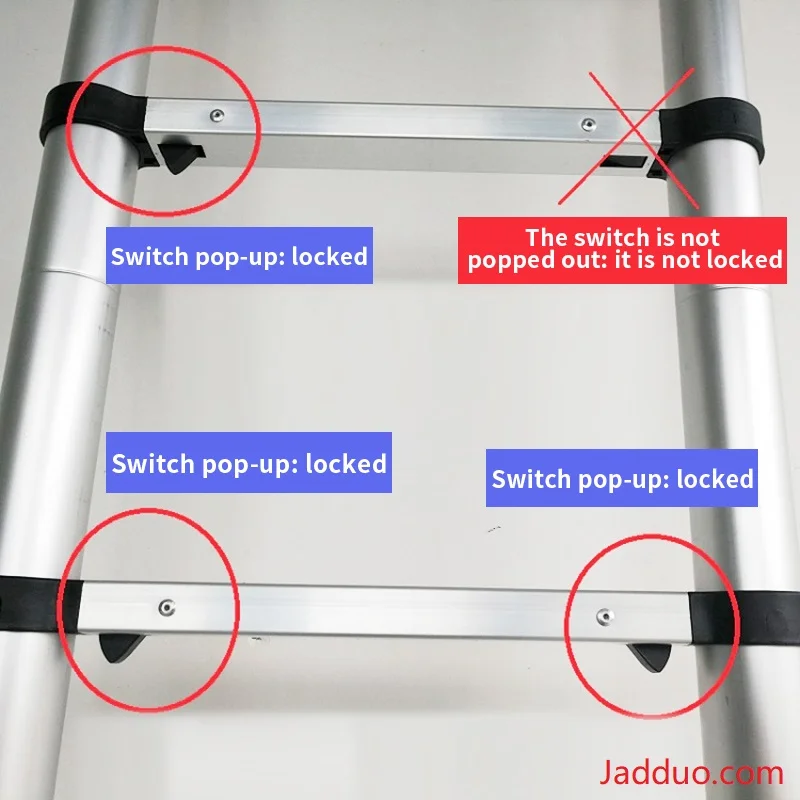
How Can You Set Up a Telescopic Ladder Safely on Uneven Ground?
Why Check the Ground First?
Avoid gravel, ice, or wet spots. If you’re working outside, use a rubber mat or extra stabilizers to keep the ladder from slipping. Firm ground is a must for safety.
What’s the Right Angle for Safe Climbing?
When using the ladder as a straight extension, set it at a 75-degree angle. This means for every 4 meters of height, the base should be 1 meter out from the wall. This angle stops the ladder from tipping backward while giving you good reach.
Why Follow the Maker’s Instructions?
Every telescopic ladder has specific rules, like step spacing (30cm or 40cm), height limits, or lock types. Follow these exactly to avoid accidents from using the ladder wrong.
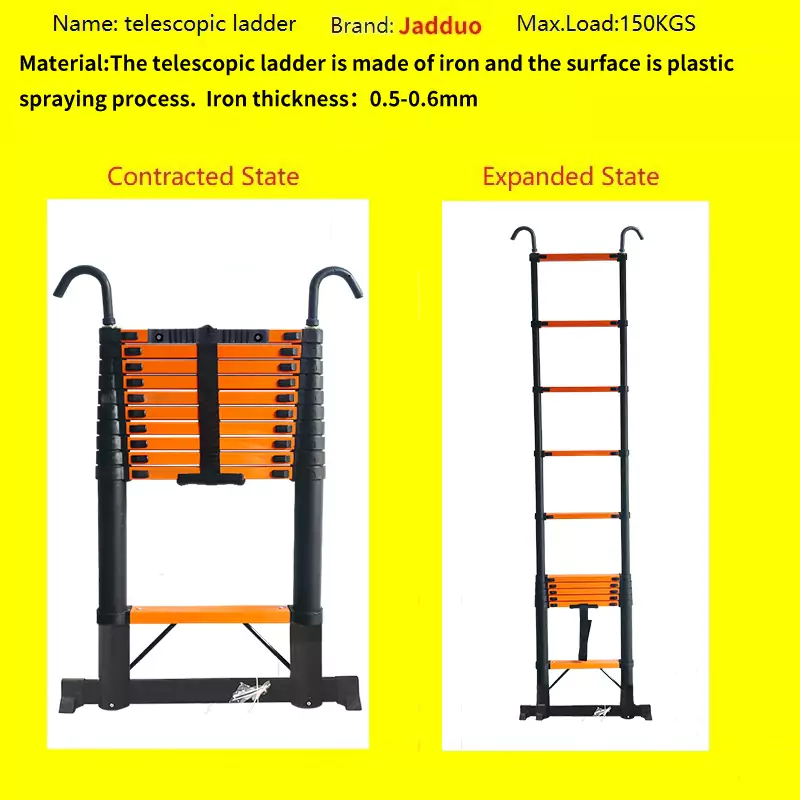
Have You Checked If the Ladder’s Weight Limit Fits Your Job?
What Counts in the Weight Limit?
The ladder’s weight limit includes your body weight plus any tools you carry. Most JADDUO telescopic ladders hold up to 150kg (330 pounds) safely. Always check the ladder’s maximum weight limit before using it.
Why Match the Ladder to Your Task?
Using a light-duty ladder for a heavy industrial job is risky. If you’re carrying heavy tools or materials, pick a JADDUO telescopic ladder with thicker aluminum tubes. These are built for tough jobs and can handle big loads.
How Do Strong Frames Help with Heavy Jobs?
JADDUO telescopic ladders with reinforced frames have thicker tubes and stronger welds at key spots. This stops them from bending under heavy weight. These are great for climbing high with tools like drills or heavy paint cans.
How Should You Test Your Telescopic Ladder Before Climbing?
Why Do a Test Extension First?
Extend the ladder all the way before using it. Check that all locks click into place without sticking. Then collapse it slowly, watching for smooth movement. This makes sure the ladder is ready to use safely.
How Do You Know Each Step Is Locked?
After extending, push down on each step. Listen for a “click”. When the switch pops up, it means that it is locked.
Don’t climb unless every section feels solid and doesn’t move.
Are You Using the Right Safety Gear and Habits?
What Shoes and Gear Should You Wear?
Wear closed-toe shoes with rubber soles. Avoid leather soles, which can slip on metal steps. A hard hat protects you from falling objects if others are working above you.
Why Keep Three Points of Contact?
Always have two hands and one foot, or two feet and one hand, on the ladder while climbing. This keeps you balanced and steady, reducing the chance of falling.
How Do Non-Slip Feet Stop Falls?
Rubber feet on JADDUO telescopic ladders grip uneven ground better than plain metal. Some have textured patterns to hold onto dirt or small rocks, keeping the ladder steady even in wet conditions.
So, contact JADDUO today for more information about safe telescopic ladders.
FAQs
Q1: Can I use a telescopic ladder near electrical lines?
A: No, metal ladders like aluminum conduct electricity and are dangerous near power lines. Stay at least 3 meters away from lines under 50kV and farther for higher voltages. Use a fiberglass ladder instead.
Q2: What if my telescopic ladder feels wobbly?
A: Check that it’s on flat ground at a 75-degree angle. Make sure all locks are clicked in place. If it still feels unsteady, don’t climb—it might need repair or replacement.
Q3: How do I pick the right step spacing?
A: Choose 30cm spacing if you’re shorter or working indoors with small adjustments. Pick 40cm spacing if you’re taller or working outside where speed matters. Match spacing to your job for safety.

